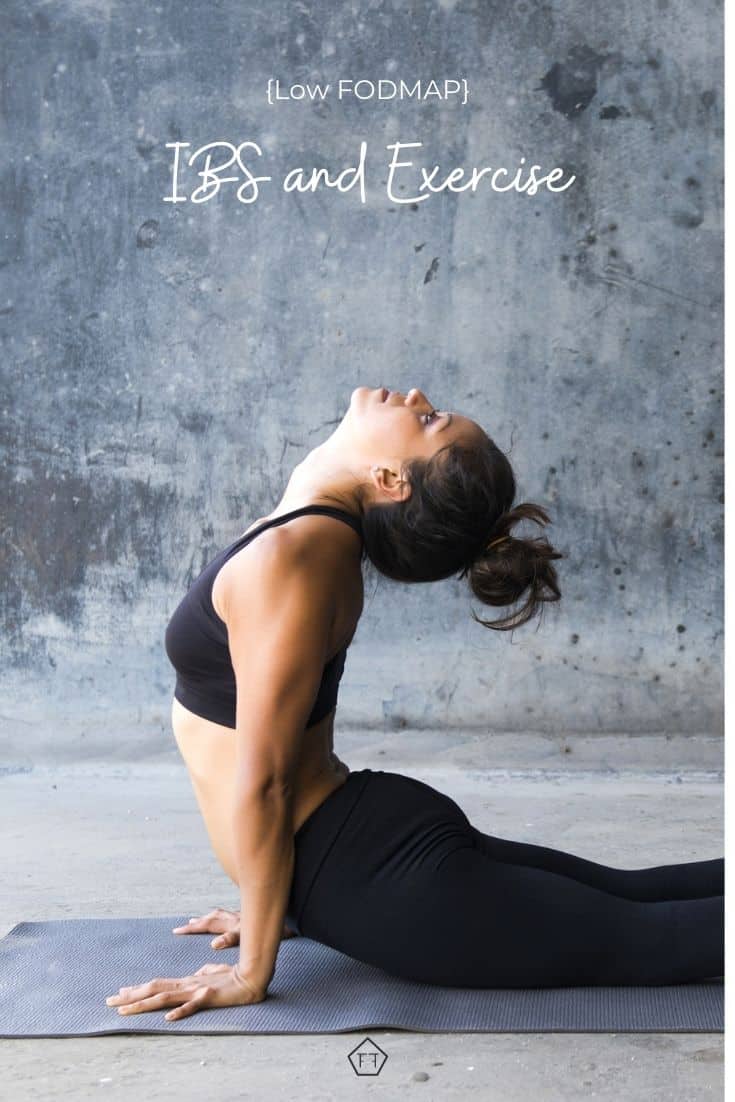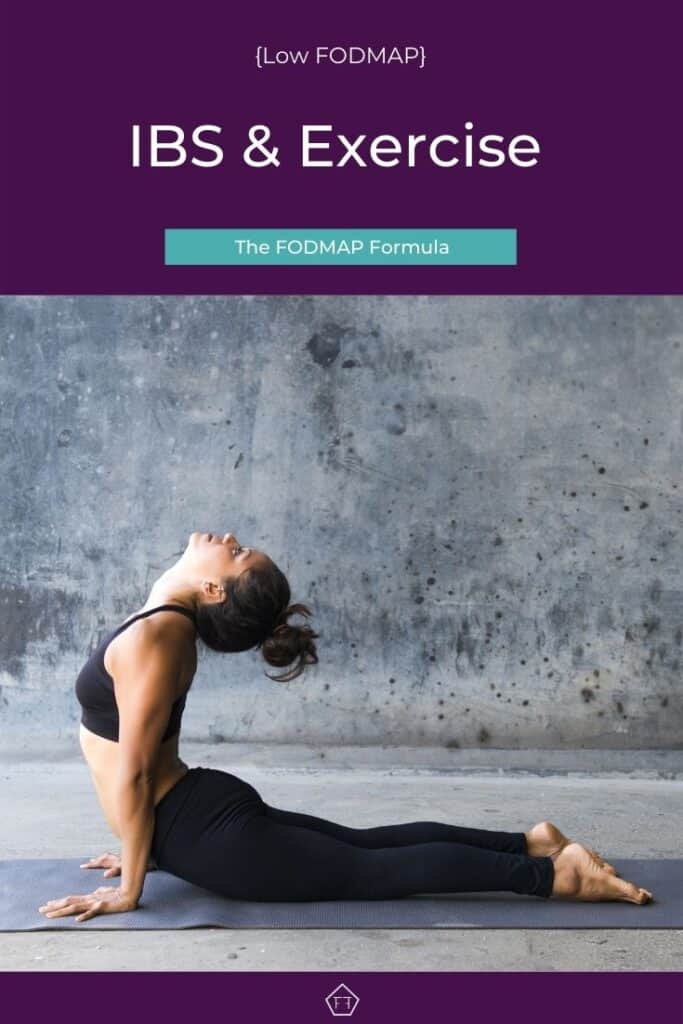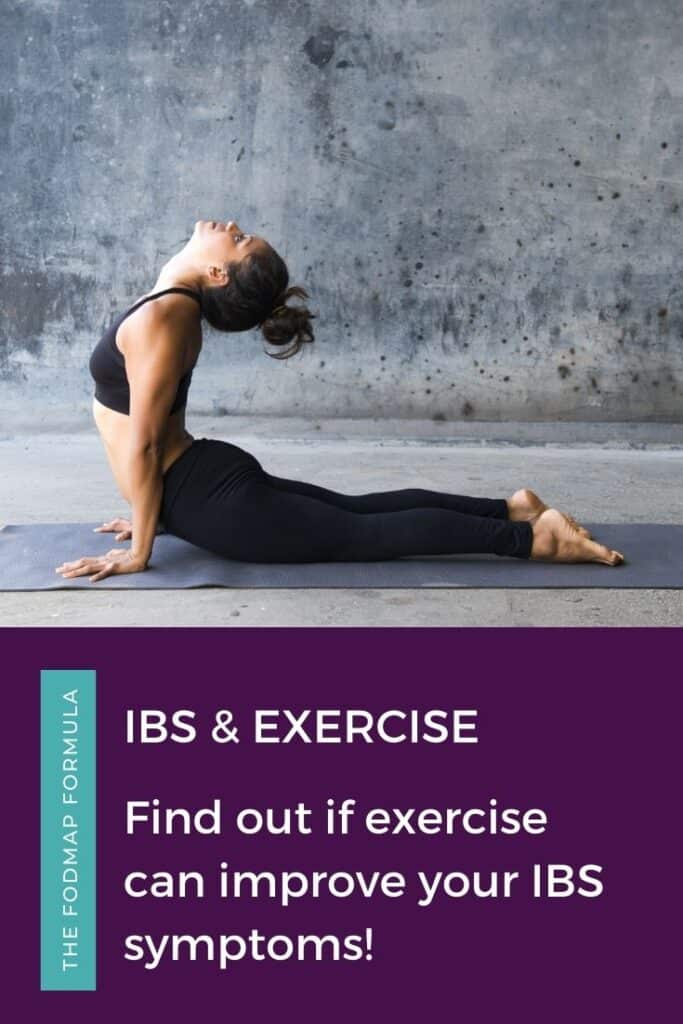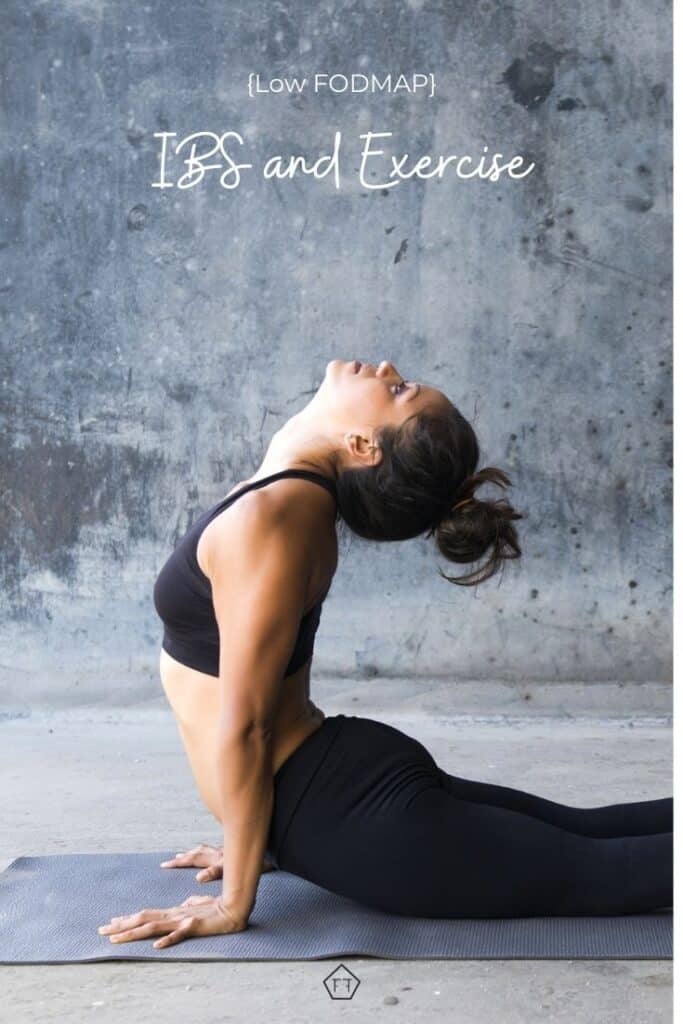There are a lot of mixed messages online about whether exercise is good or bad for IBS. That’s probably because there isn’t a yes or no answer that applies to everyone. Want to know if adding physical activity is right for you? Check out the article below for what you need to know about IBS and exercise.

Can Exercise Improve IBS Symptoms?
Researchers are starting to look at the direct relationship between IBS and exercise. So far, the results are promising!
Multiple studies have found that IBS patients who included 30 minutes of moderate exercise 5x per week significantly improved their symptoms. The study also reported that the patients who increased their fitness the most had the best results.
But, that doesn’t mean you need to jump on the nearest treadmill! In fact, people with IBS have reported that gentle exercises are the most helpful for managing their symptoms. This might include activities like walking, swimming, cycling, light jogging, yoga, or weight training.
Most professionals recommend avoiding vigorous activities like endurance running and cycling, CrossFit, and HIIT until your symptoms are under control.
This is because high-intensity exercises can cause your abdominal wall to push on your stomach and intestines. This can cause symptoms like abdominal pain, cramping, and diarrhea for IBS patients. That’s the opposite of what we want! So, start out with something gentle and move up from there.
That being said, everyone is different! As long as you listen to your body and have the right tools in your toolbox, there’s no reason you can’t work up to the activities you want.
For example, a year after starting the low FODMAP program I ran my first marathon and fell head over heels in love with kickboxing and HIIT (High-Intensity Interval Training). So, trust me when I say it can be done, friends!
Aside from helping you manage a healthy weight, regular exercise can decrease stress and anxiety, improve sleep quality, speed up and regulate bowel transit time, and help relieve bloating and gas pains.
More research needs to be done on the direct impact of exercise on IBS. But, there has been a ton of research on the effectiveness of treating stress and anxiety with physical activity.
Research is starting to draw a clear link between stress and IBS symptoms (through the brain-gut axis). This means anything you can do to help relieve stress will likely have a positive impact on your IBS. So far no studies have shown a negative impact from incorporating daily exercise. So, you have nothing to lose by giving it a try.
How to Avoid IBS Symptoms During Excercise
Managing IBS symptoms during exercise will be different for everyone, but there are a few things to keep in mind when you’re launching a new fitness routine.
How to Get Started
If you’re new to fitness, start with exercises that move your body in a gentle and comfortable way. Over time (and with a little trial and error), you’ll find a range of activities that feel good to your body.
While you’re getting the hang of things, try to avoid high-intensity activities. Aside from bouncing your intestines up and down, they can also release stress hormones and cause your digestive system to become overstimulated. Both of which can lead to diarrhea (especially in patients with IBS-D or IBS-M).
Just so we’re clear, it’s absolutely possible to do high-intensity activities with IBS. But, part of working up to these activities includes learning to check in with your body regularly. Once you know how your body communicates it’s getting unhappy, you’ll know when to take breaks or wrap up your session before you trigger symptoms.
Last but not least, don’t forget to choose an activity you’ll think you’ll like! One of my favourite activities is a group event called Dance Dance Party Party. It’s an all-ladies event where we put on a playlist and dance our socks off for 60 minutes. If you’re ever in Toronto, come dance with me! If not, check out the Dance Dance Party Party master website and see if there’s a DDPP in your area!

Fitness Best Practices
Aside from choosing the right activity, there are a few other things you can do to manage your IBS symptoms during exercise.
First, since stress is a common IBS trigger, take whatever steps you can to keep your fitness plan as relaxing as possible. For example, if you’re going for a run, know what your bathroom plan is in advance. Are you going to follow a route with bathrooms? Are you going to carry wet wipes and go where you can? Are you going to run circles around your block until you’re sure you won’t have a poop-mergency? Worrying about what will happen if symptoms hit can create a self-fulfilling prophecy, So, try to create a plan you’re comfortable with so you don’t have to think about it.
Next, think about what you’re putting in your body. Actively digesting food while your working out can cause abdominal pain and cramping as well as bloating and diarrhea. So, most experts recommend wrapping up your last meal or snack 1.5-2 hours before you work out. Staying hydrated can also help prevent cramping and diarrhea.
No matter what you eat pre-workout, try to avoid things with caffeine, or warm drinks and food. Both of these can stimulate the muscles in your bowel. While they may not always cause diarrhea, specifically, they can increase bowel transit time. This may leave you running for the bathroom, even if you’re not out for a run!
Finally, set yourself up for success by setting a consistent time to work out when your gut is already at it’s happiest. If you wake up with a refreshed system, this might be the best time of day for you. If you feel better in the evening, block off some time for yourself. Whatever time of day works best for you, try to stick to it consistently. It’s much easier to stick to a new program if you change your internal conversation from “will I work out today,” to “what can I do today?”
Have a Plan B
The nature of IBS is that sometimes you will do everything right and things will still go wrong. So, part of working out with IBS is choosing daily activities based on how you feel, not what your training schedule says.
Since working out can trigger symptoms (especially when combined with dietary triggers, stress, lack of sleep, etc), don’t be afraid to lower the intensity if your symptoms start acting up. Remember, sometimes taking care of yourself means staying home, and that’s ok!
Final Thoughts
There are a few things to think about when it comes to managing IBS and Exercise. While research is starting to show that physical activity can help manage IBS symptoms, you’ll still need to do some trial and error to see which kinds of activities are right for your body, and how they fit into your daily routine.
If you’re considering adding physical activity to your symptom management toolbox, remember to speak to your doctor before you start any exercise program! They can make recommendations to keep you healthy and safe so you can get the best result for your efforts.
You might also like one of these:
How to Relieve Trapped Gas Need some help letting it go? These practical tips will help you prevent trapped gas when you can and relieve it when it strikes.
How to Cope with IBS-Related Bloating Sometimes you can do everything right and things will still go wrong. I interviewed the experts for tips on coping with symptoms when our bodies feel out of our control.
How to Live on the Low FODMAP Diet The Low FODMAP Diet impacts more than what you eat. Check out these tips and tricks on how to integrate the low FODMAP program into your life instead of just your diet.
If you like this post, don’t forget to share it! Together we’ll get the low FODMAP diet down to a science!
References
Gillan, K. (2018, April 18). How exercise can help your IBS. Retrieved from https://coach.nine.com.au/2018/04/18/12/00/irritable-bowel-syndrome-exercise
IBS and Fitness. (n.d.). Retrieved from https://www.badgut.org/information-centre/health-nutrition/ibs-and-fitness/
Johannesson, O., Simrén, M., Strid, H., Bajor, A., & Sadik, R. (2011). Figure 2f from: Irimia R, Gottschling M (2016) Taxonomic revision of Rochefortia Sw. (Ehretiaceae, Boraginales). Biodiversity Data Journal 4: E7720. https://doi.org/10.3897/BDJ.4.e7720. The American Journal of Gastroenterology, 206, 915-922. doi:10.3897/bdj.4.e7720.figure2f




